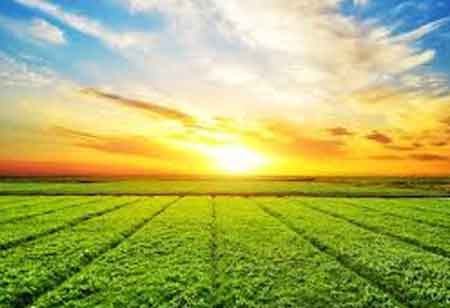Thank you for Subscribing to Agri Business Review Weekly Brief
AgTech Advancements: Paving the Way for Smarter, More Efficient Farming
The agricultural industry has experienced significant growth over time, with new, more practical, efficient, and innovative technologies reshaping farming practices. While some traditional methods and technologies remain in use, the introduction of advanced technical products.

By
Agri Business Review | Thursday, September 25, 2025
Stay ahead of the industry with exclusive feature stories on the top companies, expert insights and the latest news delivered straight to your inbox. Subscribe today.
Fremont, CA: Technology undeniably plays a crucial role in shaping modern agriculture. Researchers and engineers are continuously working to develop new technologies that address various challenges related to farming, crop production, and livestock management. These advancements are not only improving efficiency but also enhancing sustainability and productivity in the agricultural sector.
Precision Agriculture
Using GPS and other technical instruments, precision farmers gather data on their crops and soil to optimize inputs (fertilizer, water, etc.) according to particular conditions. Crop development may be enhanced while lowering waste by keeping an eye on and adapting to elements like fluctuating moisture levels—decreasing waste and saving money enables farmers to apply inputs more precisely.
One of the most extensively used technology developments in agriculture is this one, particularly in large-scale farming, where every input counts. Farmers who use precision farming see increased yields, increased soil health, and a better environmental effect. For example, farmers may prevent overfertilizing the field, which can be inefficient and lead to illness, by using current technology to check the health of the soil.
Industrial Automation
Robots and other automated procedures are used for operations like precision field seeding, planting, fertilizing, spraying insecticides and herbicides, and harvesting crops. Thanks to technological advancements, farmers can now boost agricultural yields by improving farmland efficiency. Drones may currently be used for crop mapping, crop growth monitoring, and irrigation system improvement.
Aerial surveys using drones are another way to monitor irrigation levels over vast regions, evaluate fallow fields, and provide a bird's eye perspective of the land. Drone mapping is becoming more popular among farmers to map their property for the best growing seasons, crop rotation plans, and harvesting requirements. Robotics has also made it possible to create devices for sheep shearing and milking cows, among other uses in animal production.
Automated Irrigated Systems
Irrigation system automation is an excellent example of how technology is affecting agriculture. These technologies have completely changed how water is distributed to crops, increasing both the quantity and quality of agricultural output and water distribution efficiency. Cutting-edge irrigation systems save resources by supplying water when it's most required.
This accuracy enables higher agricultural yields and more effective water distribution. The most significant gainers from this agricultural technology breakthrough are farmers in areas where drought or climate change are causing water shortages. Farmers and their crops have a bright future ahead of them as irrigation becomes a critical factor in agricultural success. Farmers that take this on board may have an advantage.





